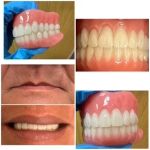Tooth Cleaning Procedures: Essential Steps for Healthy Teeth and Gums
- Why Tooth Cleaning Is Important
- Steps in Professional Teeth Cleaning
- Tooth Cleaning at Home: Best Practices
- Common Mistakes to Avoid While Cleaning Your Teeth
- How Often Should You Clean Your Teeth?
- Real-Life Experiences and Stories of Dental Cleaning
Maintaining a healthy smile goes beyond brushing alone. Regular tooth cleaning is crucial for preventing dental issues such as cavities, gum disease, and bad breath. Whether you clean your teeth at home or visit the dentist for professional cleaning, following the right procedures ensures that your oral hygiene is up to par. In this article, we’ll explore tooth cleaning procedures, from professional treatments to at-home practices, and provide tips to help you keep your teeth and gums in excellent condition.
Why Tooth Cleaning Is Important
Tooth cleaning plays a vital role in preventing a range of dental problems. Plaque, a sticky film of bacteria, forms on your teeth after you eat or drink. If not removed through regular cleaning, plaque can harden into tartar, which can only be removed by a dentist or dental hygienist. The buildup of plaque and tartar can lead to tooth decay, gum disease, and other oral health issues. Additionally, cleaning your teeth helps prevent bad breath by eliminating bacteria and food particles from your mouth.
Beyond aesthetics, keeping your teeth clean reduces your risk of gum inflammation, cavities, and even systemic health problems like heart disease. Maintaining a proper tooth cleaning routine helps ensure that your teeth last a lifetime, and it also supports your overall health.
Steps in Professional Teeth Cleaning
A professional teeth cleaning procedure is typically performed by a dental hygienist during your regular dental checkup. While the exact steps may vary slightly depending on the clinic, the process generally involves the following stages:
- Initial Examination: The dental hygienist will first examine your teeth and gums to check for any signs of gum disease, cavities, or other oral health issues.
- Scaling: Using specialized tools, the hygienist will remove plaque and tartar from the surfaces of your teeth, especially along the gumline and in between teeth where brushing might not reach.
- Polishing: After scaling, the hygienist will polish your teeth with a special toothpaste to remove any remaining plaque and smooth the surface of your teeth.
- Fluoride Treatment: A fluoride treatment is often applied to the teeth to help strengthen tooth enamel and protect against future cavities. The fluoride is usually left on for a few minutes to ensure it can work effectively.
Professional teeth cleaning typically occurs once every six months, depending on your oral health. Regular professional cleanings are essential for maintaining healthy teeth and gums and preventing more serious dental problems in the future.
Tooth Cleaning at Home: Best Practices
While professional cleaning is necessary for thorough oral hygiene, daily cleaning at home is just as important. Here are the key steps for cleaning your teeth effectively at home:
- Brush Twice a Day: Brush your teeth at least twice a day using a soft-bristled toothbrush and fluoride toothpaste. Brush for two minutes, ensuring you clean all surfaces of your teeth, including the outer, inner, and chewing surfaces.
- Use Proper Technique: Hold your toothbrush at a 45-degree angle to your gums and use gentle, circular motions to brush your teeth. Avoid scrubbing aggressively, as it can damage your gums and enamel.
- Floss Daily: Flossing is essential for removing plaque and food particles from between your teeth where your toothbrush can’t reach. Make sure to use a gentle sawing motion to slide the floss between your teeth and curve it around each tooth to clean the sides.
- Rinse with Mouthwash: After brushing and flossing, rinse your mouth with an antibacterial mouthwash to help kill bacteria, freshen your breath, and further protect your teeth and gums.
By following these basic steps and maintaining a consistent daily routine, you can keep your teeth clean, fresh, and healthy between dental visits.
Common Mistakes to Avoid While Cleaning Your Teeth
While cleaning your teeth may seem straightforward, many people make common mistakes that can impact the effectiveness of their routine. Here are a few mistakes to avoid:
- Brushing Too Hard: Brushing with too much force can damage your gums and enamel. Use gentle pressure while brushing to avoid irritation.
- Skipping Flossing: Many people skip flossing, but it’s essential for removing plaque and food particles between teeth. Make sure to floss once a day to maintain optimal oral hygiene.
- Not Replacing Your Toothbrush: Your toothbrush should be replaced every 3-4 months or sooner if the bristles become frayed. A worn toothbrush is less effective at cleaning your teeth.
How Often Should You Clean Your Teeth?
It’s essential to clean your teeth regularly to maintain good oral health. At a minimum, you should brush your teeth twice a day and floss at least once a day. However, the frequency of professional cleanings can vary. Most dentists recommend having a professional cleaning every six months, but if you have specific oral health concerns such as gum disease, you may need cleanings more frequently. Always consult with your dentist for personalized recommendations.
Real-Life Experiences and Stories of Dental Cleaning
For many people, regular dental cleaning has been a game-changer for their oral health. Take Emily, for example, who struggled with gum inflammation for years. After incorporating regular professional cleanings and improving her daily brushing and flossing routine, she noticed significant improvement. “My gums used to bleed whenever I brushed, but now they’re healthier, and I haven’t had any issues with my teeth since I started being more consistent with my care,” Emily shared.
Another example is Mark, who was prone to cavities in the past. After following his dentist’s advice on tooth cleaning and maintaining regular cleanings, Mark found that his cavities stopped occurring. “I can’t believe the difference it made,” he said. “I didn’t know how much a good cleaning routine could prevent problems until I tried it.”
Where to Buy the Best Dental Cleaning Products
If you’re looking for high-quality products to help with your daily oral care routine, visit Dentistry Toothtruth, where you’ll find expert-recommended toothbrushes, floss, mouthwash, and other essential oral hygiene products. Make sure you’re using the right tools to keep your smile healthy!







 Rainbow Dental Care4.0 (91 review)
Rainbow Dental Care4.0 (91 review) Bloch Michelle DDS0.0 (0 review)
Bloch Michelle DDS0.0 (0 review) Corner Dentistry4.0 (42 review)
Corner Dentistry4.0 (42 review) Community Health Care Hilltop Family Dental Clinic3.0 (188 review)
Community Health Care Hilltop Family Dental Clinic3.0 (188 review) Desert Palms Dental4.0 (55 review)
Desert Palms Dental4.0 (55 review) Sukoff Orthodontics4.0 (433 review)
Sukoff Orthodontics4.0 (433 review) The Importance of Oral Health Education During Pregnancy for a Healthy Pregnancy
The Importance of Oral Health Education During Pregnancy for a Healthy Pregnancy Best Tips for Brushing Your Teeth Properly for Healthy Gums: Essential Techniques for Oral Health
Best Tips for Brushing Your Teeth Properly for Healthy Gums: Essential Techniques for Oral Health Why Skipping Dental Checkups Can Lead to Bigger Oral Health Problems
Why Skipping Dental Checkups Can Lead to Bigger Oral Health Problems Advantages of Porcelain Dental Restorations
Advantages of Porcelain Dental Restorations How Can Diabetes Cause Tooth and Gum Problems? Preventing and Managing Oral Health Issues
How Can Diabetes Cause Tooth and Gum Problems? Preventing and Managing Oral Health Issues Healthy Habits for Promoting Good Oral Health and Hygiene: Tips for a Healthy Smile
Healthy Habits for Promoting Good Oral Health and Hygiene: Tips for a Healthy Smile